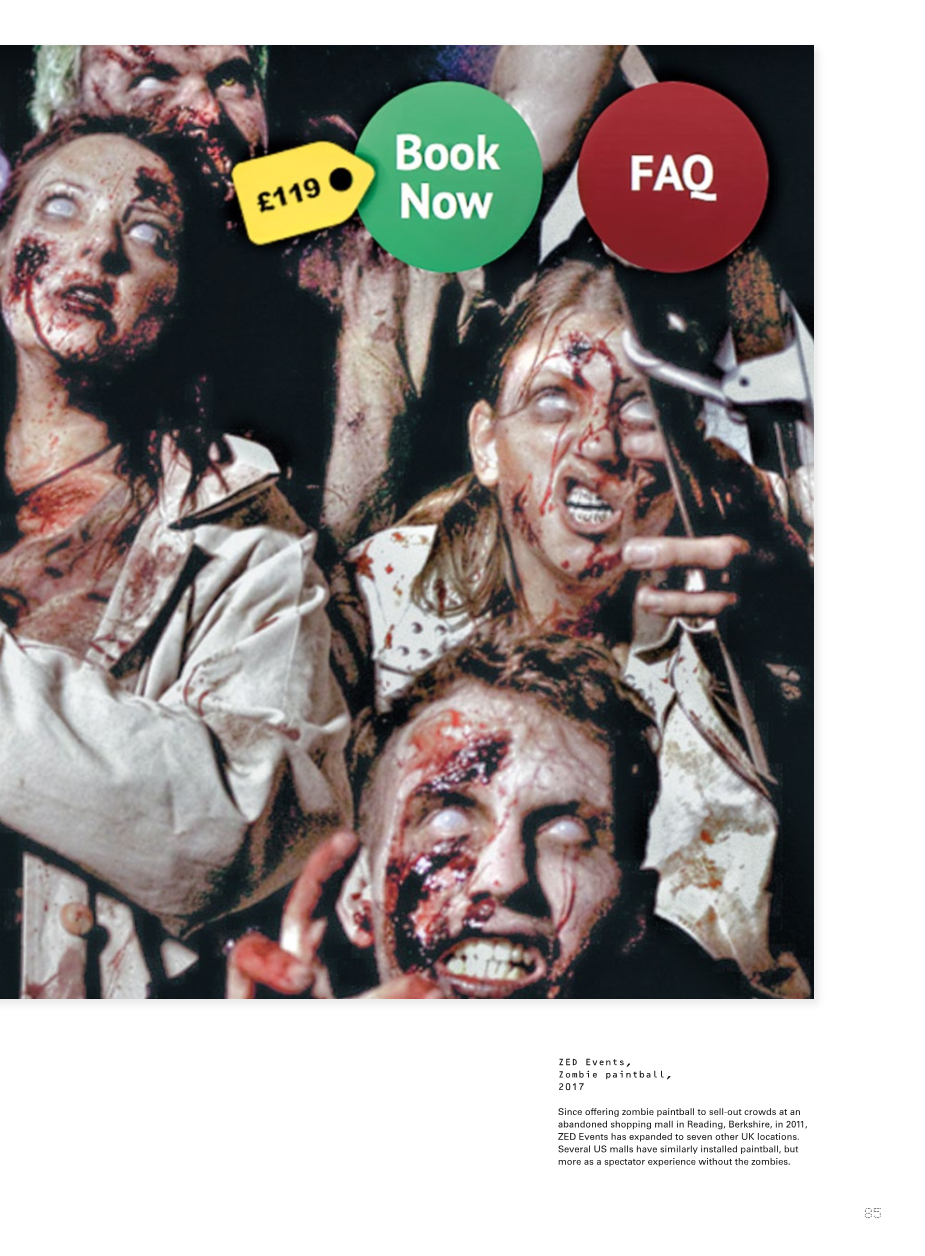

英语原文共 8 页,剩余内容已隐藏,支付完成后下载完整资料
DEAD AND DYING SHOPPING MALLS, RE-INHABITED
The mass culture of the second half of the 20th century, characteristic of the lsquo;consumersrsquo; republicrsquo; that is the United States of America, produced a surplus of built space dedicated to shopping. Suburban strip centres, big-box stores and shopping malls, easily accessed by car from arterial roads and highways, were built at a rapid clip on large tracts of former green fields, grazing lands, desert scrub and filled wetlands on the metropolitan periphery, rendering lsquo;Main Streetrsquo; retail obsolete. The typical one- or two-storey North American mall is an agglomeration of large, windowless department stores connected by double-loaded corridors – often skylit – lined with smaller shops. There is close to 2 square metres (22 square feet) of shopping-centre space per capita in the US, compared to only 0.2 square metres (2 square feet) in Europe, 2 and this surplus is unsustainable.
Approximately one-third of enclosed malls in the US have died or are dying, covering over 13,000 hectares (32,120 acres) or more land area than the cities of Boston, Massachusetts, or Manchester in the UK. In the 1980s and 1990s, tenants often relocated to newer, competing malls. Today they are more likely to close shop, relocate back to Main Street or go online. (E-retailing, meanwhile, is producing its own troubling surpluses of massive distribution centres, wasteful packaging and idling delivery trucks in residential neighbourhoods.) The size of malls, anywhere from 30,000 to 120,000 square metres (320,000 to 1.3 million square feet) each on 20 to 40 hectares (50 to 100 acres), leaves many as stranded white elephants.
This provides opportunities for the virtuous strategy of building re-inhabitation, or the creative reuse of obsolete structures and their parking surrounds for new non-retail uses. A database we have been maintaining for over a decade tracks examples of suburban property types that have been retrofitted into significantly more sustainable places. Of the approximately 1,500 shopping centres in the US that were at one time enclosed, 1,035 are still operating, and 196 are in various stages of complete or substantial redevelopment with a more urban pattern of new buildings and uses. Ten have integrated green infrastructure or become parks. Another 119 have undergone substantial or complete re-inhabitation. This does not transform the morphology of generally low-density buildings that are separated by use and dependent on private cars. But it does provide opportunities to re-localise economies with more community-serving uses and retain the embodied energy of the real-estate product shells that remain. While the focus here is on the re-inhabitation of dead and dying shopping malls, this is happening in conjunction with more systemic changes that are gradually transforming the social, economic and environmental performance of the larger landscape. 3 This is not a zero-sum game between cities and their suburbs, as all metropolitan areas require stewardship and skilful regeneration to stem the spread of energy-wasting and resource-intensive sprawl.
One of the primary advantages of older shopping malls is the communities that have grown around them. The needs of these neighbours go beyond shopping and entertainment to include medical and other services, jobs, education and physical activity. Another advantage are the vast expanses of surrounding tarmac ready for creative re-imagination.
The timescales for retrofits vary. Mall owners often pursue short-term projects, whether temporary pop-ups or events that keep the lights on and stabilise vacancies to retain existing rent-paying commercial tenants. Creative entrepreneurs have embraced the lsquo;undeadrsquo; post-apocalyptic ambiance of vacant malls and converted them into profitable sites where patrons play zombie paintball or engage in drone racing. Others have made use of their lack of inhabitants to serve lsquo;the Cloudrsquo; as data centres or solar farms, as at the former Eastgate Mall in Indianapolis. Medium-term approaches comprise cosmetic changes, such as new signage and rebranding with a bright coat of paint, to eke out enough income to keep an existing property economically stable without major new investment for up to 20 years, the typical lifespan for a conventional shopping mall between major renovations. These re-inhabitations may become incubators for a range of locally owned lsquo;mom and poprsquo;-type businesses. Longer-term projects require significant investment to provide higher standards of building performance suitable for new institutional and public uses.
MEDICAL MALLS AND OFFICE SPACE
One of the more successful approaches to regeneration, not inappropriately, has been to insert medical clinics or to completely convert properties into medical malls. The retailing of healthcare services in the US started in 2000, and accelerated in 2010 when the Affordable Care Act (lsquo;Obamacarersquo;) created more than 22 million newlsquo;health shoppersrsquo; seeking consumer-oriented services at convenient times and locations, whether in person or online. Between 2000 and 2014, 44 per cent of outpatient visits occurred in the evenings and at weekends, increasingly in more dispersed locations closer to ageing baby boomersrsquo; homes and combined with shopping. 4 In addition to the 900 walk-in clinics attached to a chain of pharmacies around the country, 16 malls now have major health clinics and medical offices breathing new life into them and improving healthcare access.
Nashville Mayor Karl Dean credited one such example with reinvigorating a neglected part of his city. The 1967-vintage One Hundred Oaks Mall had seen much better days when Vanderbilt University Medical Center (VUMC) chose to move some of its outpatient services from a crowded, parking-challenged, midtown Nashville campus into the mallrsquo;s vacant second floor. It offered 42,000 square metres with room to grow, ample parking and a new marketi
全文共17228字,剩余内容已隐藏,支付完成后下载完整资料
资料编号:[16210],资料为PDF文档或Word文档,PDF文档可免费转换为Word
以上是毕业论文外文翻译,课题毕业论文、任务书、文献综述、开题报告、程序设计、图纸设计等资料可联系客服协助查找。


